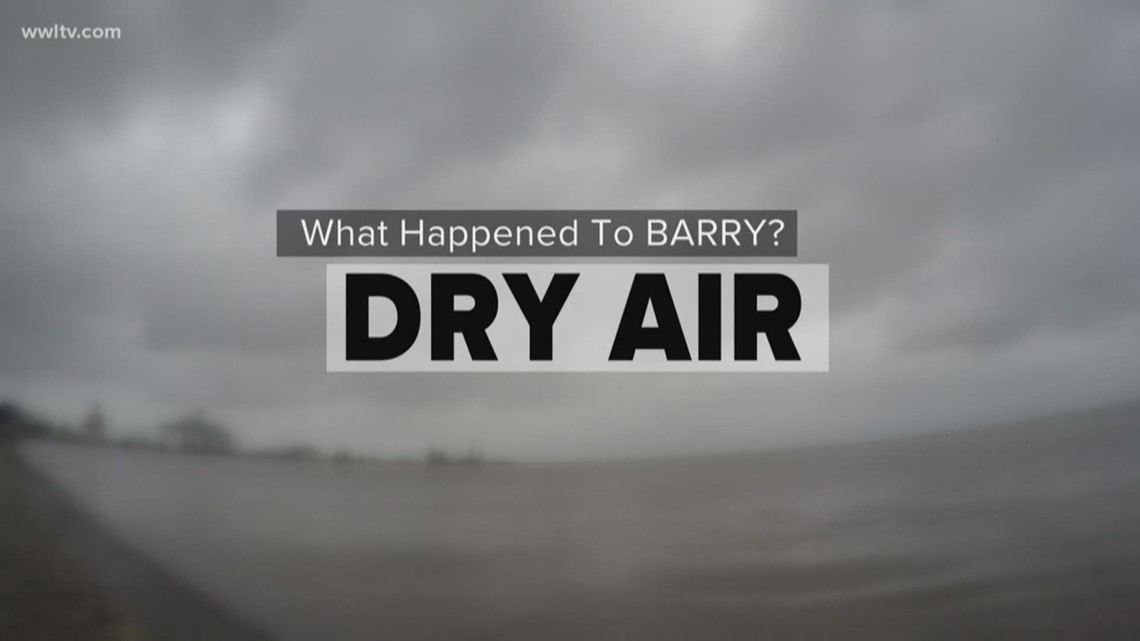NEW ORLEANS — The warnings came from every level in Louisiana -- state, parish and city: Hurricane/tropical storm Barry could bring potentially torrential flooding. But it didn't.
“There were three things we were confronted with this: One, there was dry air, that's probably the most important thing. The dry air sat over on top of us into Friday and even into Saturday before we started getting rain. The rain just doesn't develop," WWL-TV Meteorologist Dave Nussbaum said.
Nussbaum says the dry air north of the storm knocked it down. The second factor is wind shear. The wind shear kept the rain which did develop from reaching the many areas in southeast Louisiana that were bracing for heavy flooding.
"So, our window where we were supposed to have rain didn't happen. Most of the rain fell in the Gulf basically. The gulf got 15 to 20 inches of rain, which is exactly what we thought we'd get over our area," he said.
Nussbaum says the third factor was the storm's disorganized nature. From the beginning Barry didn't fit the classic tropical system, making it harder for the computer models and those relying on them to forecast.
“It's one of those features that mother nature is going to do what it wants to do. I'm going to try anticipate any moves she's going to make, but sometimes she just pulls a curve ball,” Nussbaum said.
Ultimately, it feels like a luxury to complain about the lack of a storm's impact when you consider the alternative, which is not getting enough warning when potential disaster approaches.

